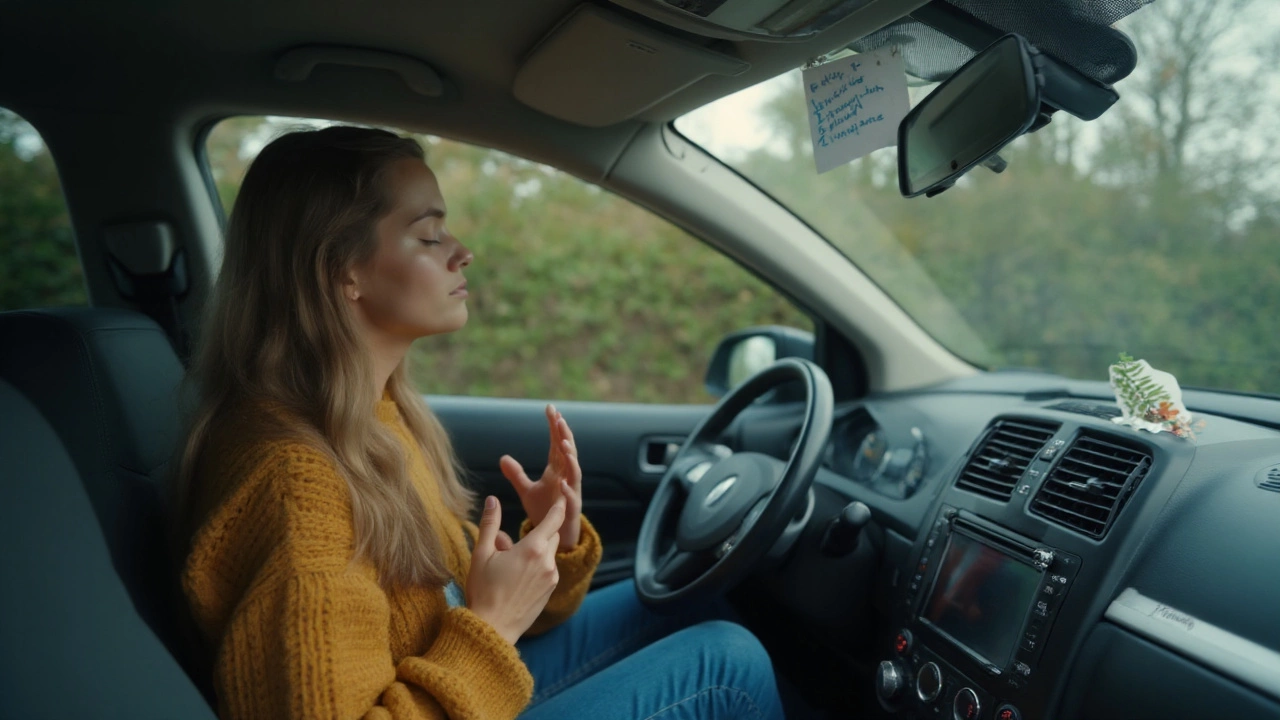How to Drive Confidently by Yourself – No More Nerves
Ever feel a knot in your stomach the moment you sit behind the wheel alone? You’re not the only one. The good news is that confidence behind the wheel isn’t a mystery; it’s a habit you can build with a few clear steps.
Start with the Right Mindset
Confidence starts in your head. Before you even turn the key, take a minute to breathe. Remind yourself that you’ve practiced the basics – clutch control, steering, braking – countless times in lessons or with a friend. Visualise a smooth, uneventful drive: the road ahead, the green light, the gentle hum of the engine. This tiny mental rehearsal rewires the brain to expect success rather than failure.
Another tip is to set a small, achievable goal for each solo outing. It could be “drive from home to the local shop and back” or “navigate one roundabout without help.” Hitting these micro‑targets gives you a quick win and builds momentum for longer trips.
Prep Your Car and Route
Knowing your vehicle reduces surprises. Sit in the driver’s seat, locate the mirrors, familiarize yourself with the dashboard lights and controls. Even a two‑minute walk‑around before you start can calm nerves.
Plan your route in advance. Use a map or phone app to see the major turns, traffic lights, and any tricky junctions. Write down key points if you’re nervous about memory. When you’re not guessing what’s coming next, your mind can stay focused on driving, not on what might go wrong.
Pick a time of day when traffic is light. Early mornings or late evenings often have fewer cars, giving you space to practice without pressure. The quieter road lets you concentrate on your technique rather than competing with aggressive drivers.
While you’re out, keep distractions to a minimum. Turn off unnecessary notifications, keep the music at a comfortable volume, and resist the urge to check the phone. If you need a break, pull over safely, take a breath, and reset.
Use Simple Driving Drills
Practicing specific skills builds muscle memory. Try these quick drills on a quiet street:
- Steering circles: Make smooth, wide circles with the wheel, then tighten the radius. Notice how the car responds.
- Brake timing: Approach a stop sign, press the brake gently, and aim to stop just before the line. Repeat until it feels natural.
- Gear changes: If you’re in a manual, shift up and down without looking at the revs. Focus on feeling the clutch bite point.
Doing these drills a few minutes each drive reinforces confidence without feeling like a full lesson.
Deal with Anxiety on the Spot
If anxiety spikes while you’re driving, use the 4‑4‑4 technique: inhale for 4 seconds, hold for 4, exhale for 4, then pause for 4. Repeat twice. The rhythm steadies your heart and clears thoughts.
Another trick is to talk to yourself like you would a friend. Say out loud, “I’m in control, I’ve got this,” or simply repeat a calming phrase. Hearing the words can break the cycle of worry.
Remember, every driver— even seasoned pros—gets a little jittery sometimes. The key is not to avoid the feeling but to keep moving forward despite it.
Track Your Progress
After each solo drive, jot down what went well and what felt shaky. Over a week you’ll see patterns: maybe you’re great on straight roads but struggle at roundabouts. Knowing exactly where to improve saves time and frustration.
Celebrate the wins, no matter how small. A successful trip to the grocery store? That’s a confidence boost. Over time, those wins add up and the nervousness fades.
Driving alone doesn’t have to be a scary test. With a clear mindset, a bit of prep, simple drills, and a habit of noting progress, you’ll find yourself enjoying the freedom of solo motoring. So grab the keys, take a deep breath, and hit the road – confidence is just a few easy steps away.
- September 6 2025
- 0 Comments
- Rowan Cavendish
How to Stop Being Nervous Driving by Yourself: Calm, Confidence, and Safety Tips
Nervous driving alone? Use simple, proven steps to stay calm, build confidence, and handle tough moments-plus NZ tips, checklists, and a practice plan.
- Driving Lessons (41)
- Driving Test Tips (33)
- HGV Training (31)
- Driving Test Booking (27)
- Driving Licence Renewal (24)
- Driving Theory Test (21)
- Intensive Driving Course (16)
- Pass Plus Course (15)
- Driving Tips (15)
- Driver Licensing (14)
Categories
- January 2026 (4)
- December 2025 (15)
- November 2025 (13)
- October 2025 (21)
- September 2025 (5)
- August 2025 (8)
- July 2025 (30)
- June 2025 (30)
- May 2025 (30)
- April 2025 (31)
- March 2025 (30)
- February 2025 (28)
Archives
- driving lessons
- driving test
- driving tips
- intensive driving course
- driving test tips
- HGV training
- learn to drive
- driving theory test
- driver training
- driving test booking
- pass driving test
- HGV driving
- road safety
- driving license renewal
- Virginia driving test
- learner drivers
- safe driving
- Virginia driver's license
- driving license
- learning to drive

